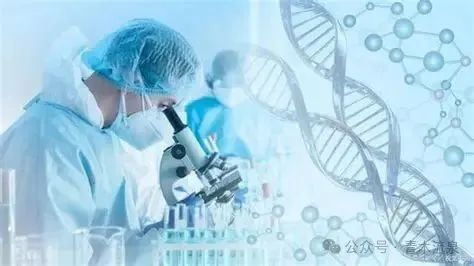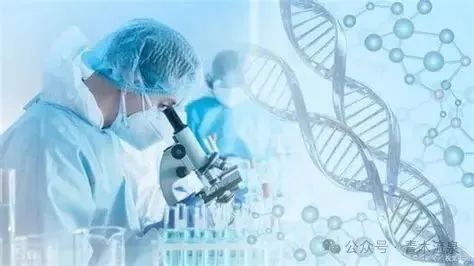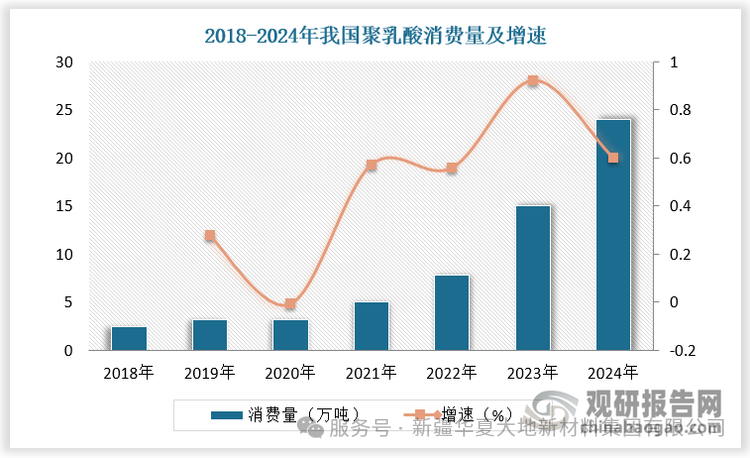
By 2025, biomanufacturing is emerging as a shining representative of "new quality productivity", profoundly reshaping the global industrial landscape. The market size of China's biomanufacturing industry is expected to reach 575 billion yuan, with favorable policies and "technological breakthroughs" jointly driving explosive growth in the sector. From "artificial meat" on our dining tables to environmentally friendly "new materials" based on biology, from "gene editing" in precision medicine to the sci-fi reality of "brain-computer interfaces", biomanufacturing is changing every aspect of our lives, from clothing, food, housing to transportation, achieving truly "green production". It is not only a concentrated manifestation of cutting-edge technology but also a "future industry" closely related to people's well-being.
While we are still discussing the "new quality productivity", have we noticed a silent yet powerful force that is quietly changing our world? It is - biomanufacturing. This term may sound a bit "high and cold", but it has already permeated our daily lives. It can even be said that the future has arrived. Are you really ready?
Just imagine that in the future, clothes no longer rely on cotton but are directly "printed" out; the meat on the dining table doesn't need to be raised but "grows" from cells; even those once troublesome plastic wastes can be "eaten" by microorganisms and transformed into new materials. This is not the wild imagination of a science fiction movie, but the reality that biomanufacturing is turning these "impossibilities" into. It is not only a "hardcore" breakthrough at the forefront of science and technology, but also closely related to our daily life, such as clothing, food, housing and transportation.
Today, let's together lift the veil of mystery from this "future is here" biomanufacturing industry, and see what kind of magic it holds and how it will profoundly influence our 2025 and even the distant future.
I. What exactly is bio-manufacturing?
When many people hear the term "biomanufacturing", they might conjure up images of various "high-tech" scenarios, thinking it's out of reach. In fact, explained in the simplest terms, biomanufacturing is the ingenious use of living organisms (such as microorganisms and cells) or biological processes (such as fermentation and enzyme catalysis) to produce the various products we need. It's like a "super factory", except that the "workers" in this factory are living organisms, making the production process more green, efficient, and even intelligent.
Take the simplest example. Beer and bread, which are indispensable in our daily life, both owe their existence to the fermentation of yeast. This is the oldest form of biomanufacturing. Nowadays, biomanufacturing has "evolved" to a brand-new stage. It can produce far more than just food. It also includes medicines, new materials, clean energy, and even the clothes we wear and the cosmetics we use on our faces may be marked with the unique label of "biomanufacturing".
By 2025, the reach of biomanufacturing has extended into even more astonishing fields. For instance, you may have already heard of "artificial meat", which is produced through cell culture technology in laboratories. This "future meat" not only rivals traditional meat in taste and nutritional value, but more importantly, it significantly reduces the environmental pressure caused by traditional livestock farming, making it a more environmentally friendly and sustainable option. Another example is those new types of biomaterials, which not only have the environmentally friendly characteristic of being degradable, but can even self-repair in specific environments. This shows great application potential in fields such as packaging, medical care, and construction. These are all the real surprises brought to us by biomanufacturing, and a vivid demonstration of "technological breakthroughs".
II. "New Quality Productivity" in Biomanufacturing
Why do we predict that 2025 will be a crucial year for the "new quality productivity" of biomanufacturing? This is not groundless speculation but is supported by solid data and policies. According to our latest research data, the market size of China's biomanufacturing industry reached 491 billion yuan in 2024 and is expected to maintain strong growth in 2025. Even more exciting is that the China Business Institute predicts that by 2025, the market size of China's biomanufacturing will soar to 575 billion yuan, and it will continue to grow at an average annual rate of 17% over the next decade, with the potential to become one of the most dynamic markets globally. This is driven by the high-level attention from the national strategy and the strong "boost" from policies.
Do you still remember the "Report on the Work of the Government" released by the State Council on March 5, 2025? It explicitly proposed to "establish a growth mechanism for future industry investment and cultivate future industries such as bio-manufacturing, quantum technology, embodied intelligence, and 6G". This is not just a slogan; it has pointed out a clear direction for the development of the bio-manufacturing industry and injected powerful impetus. Subsequently, the General Office of the Ministry of Industry and Information Technology and the General Office of the National Development and Reform Commission jointly issued the "Notice on Cultivating the Capacity Building Platform for Bio-Manufacturing Pilot Production", and formulated the "Guidelines for Cultivating the Capacity Building Platform for Bio-Manufacturing Pilot Production (2025 Edition)". This is like laying a superhighway for the "growth" of bio-manufacturing, enabling scientific research achievements to move from the laboratory to the vast market more quickly and smoothly, truly achieving the combination of theory and practice.
Looking globally, the bio-manufacturing industry is also experiencing an unprecedented explosive growth. The next-generation bio-manufacturing market is expected to reach 25.71 billion US dollars by 2025, and the global market size has exceeded 24.09 billion US dollars in 2024, with a compound annual growth rate possibly exceeding 8.4%. By 2037, the revenue is projected to exceed 68.74 billion US dollars. These astonishing figures clearly tell us that bio-manufacturing is no longer a niche concept; it is becoming a new engine for global economic development, a true "future industry", and a concentrated embodiment of "innovation opportunities".
What is worth our deep consideration is that although the core industry added value of bio-manufacturing in China currently accounts for only 2.4% of the industrial added value, which is lower than that of developed countries such as the United States, Europe and Japan, this precisely confirms from another perspective our huge development potential and broad market space. Under the correct guidance of national policies and the strong impetus of market demand, China's bio-manufacturing industry is now facing unprecedented development opportunities and is expected to achieve a "overtaking on the curve" in the coming years, becoming a global leader in the field of bio-manufacturing.
III. Biomanufacturing: How Will It Transform Our Lives?
To put it simply, "theory combined with practice" is the essence of a viral article. Biomanufacturing may sound somewhat esoteric, but its impact on our lives is real and tangible. It's not just a "black technology" confined to laboratories; it's the "new normal" for our future clothing, food, housing, and transportation. It's those changes in "internet hot news" that seem distant but are actually close at hand.
The "Revolution" on the Tip of the Tongue: From "Artificial Meat" to "Future Food"
Do you still remember the once-hot "artificial meat" concept? By 2025, it is no longer a novelty but has gradually become a common sight on ordinary people's dining tables. Through cell culture technology, we can "grow" "future meat" in the laboratory that is indistinguishable from real meat. This not only effectively addresses the environmental pollution and resource consumption problems caused by traditional animal husbandry but, more importantly, provides humans with a healthier and more sustainable source of protein. This is not just a victory for "artificial meat", but also the prelude to the "future food" era. Imagine, on the dining tables of the future, there might be all kinds of "customized" foods produced through biotechnology, which are not only nutritionally balanced but also precisely meet your various picky demands for taste and flavor. Behind this, it is the huge potential of "synthetic biology" at work, which is redefining our perception and production methods of food.
2. Green "New Materials": The Hope to Bid Farewell to "White Pollution"
Plastic pollution has long been a global challenge, often referred to as "white pollution". However, biomanufacturing is offering us practical solutions. Through microbial fermentation, we can produce biodegradable bioplastics that can be decomposed by the natural environment after use, significantly reducing the burden on the Earth. This is not merely an environmental protection measure, but also a green upgrade for the entire industry. From daily packaging materials to complex automotive parts, from precision medical devices to robust construction materials, biomanufacturing is providing more environmentally friendly and sustainable material options for all industries. This is a vivid practice of the "green production" concept, a huge dividend brought by "technological breakthroughs", and a true portrayal of "sustainable development" in the "hot search long-tail words".
3. New Therapies for Health: The Future of Gene Editing and Precision Medicine
In the field of medical and health care, biomanufacturing has truly come into its own, being hailed as a "miracle of life science". You may have heard of the "gene editing" technology, which is like a precise "gene scissors", capable of accurately modifying genes and thus treating some genetic diseases that were once considered "incurable". By 2025, the application of gene editing technology in the field of "precision medicine" has become increasingly widespread, bringing unprecedented hope to patients with cancer, rare diseases, and more. Additionally, the "regenerative miracle of stem cells" is also becoming a reality. Through stem cell technology, we can repair damaged tissues and organs, and even have the potential to achieve organ regeneration. All these cutting-edge technologies are inseparable from the strong support of biomanufacturing. They are completely transforming our understanding and treatment of diseases, and are a powerful support for the "Healthy China" trend on WeChat Index's hot search list.
4. Brain-Computer Interface: Science Fiction Becomes Reality
The term "brain-computer interface" sounds like something straight out of a Hollywood sci-fi movie, doesn't it? But by 2025, it will no longer be a distant dream but a reality gradually unfolding. Through bio-manufacturing technology, we can create miniature, high-precision sensors and implant them in the brain, enabling direct connection between the brain and external devices. This not only helps the disabled regain their motor abilities but may even enhance human cognitive capabilities in the future. Although it is still in its early stages, the "sci-fi reality of brain-computer interfaces" is gradually becoming a reality, bringing unlimited possibilities to humanity and sparking profound discussions on "bioethics".
These are merely a small part of how biomanufacturing is changing our lives. From "new quality productivity" to "green production", from "technological breakthroughs" to "market demands", biomanufacturing is leading a profound industrial transformation with its unique charm, and also painting a more beautiful and "innovation-opportunity-rich" future picture for us.
IV. Biomanufacturing: A Future We All Can Participate In
Perhaps you might think that biomanufacturing is far removed from us, a domain exclusively for scientists and entrepreneurs. But in reality, this "future is now" revolution can be participated in by each and every one of us in our own way. It is not merely an innovation at the technical level, but also a profound transformation in our way of thinking.
For the general public, we can actively pay attention to new products and applications in the field of biomanufacturing, and try to accept and experience the convenience brought by these "future technologies". For instance, when shopping, we can give priority to products made of bio-based materials, and support the concept of environmental protection with practical actions; we can also proactively learn about the nutritional value of "future foods" and try new dietary patterns. These seemingly small choices are all contributing to the vigorous development of the biomanufacturing industry and are the best practice of the "sustainable development" concept.
For investors and entrepreneurs, biomanufacturing is undoubtedly a blue ocean brimming with boundless opportunities. Driven by favorable national policies and market demands, "innovation opportunities" in the field of biomanufacturing are emerging one after another. Whether it is the research and development of cutting-edge technologies such as gene editing and synthetic biology, or the expansion of application scenarios such as bio-based materials and biomedicine, they all hold tremendous commercial value and investment potential. Of course, opportunities and challenges always coexist. How to stand out in the fierce market competition requires in-depth industry insight, acute market perception, and continuous innovation capabilities.
What I want to say in the end is that biomanufacturing is not merely a technology, but also an idea, an unremitting pursuit of sustainable development and a green future. It enables us to clearly see that technology can not only bring efficiency and convenience, but also effectively address the common challenges faced by humanity, providing more possibilities for the future of the Earth and humanity. In 2025, the wave of biomanufacturing has already surged. Are you truly ready to embrace this future full of infinite possibilities?








